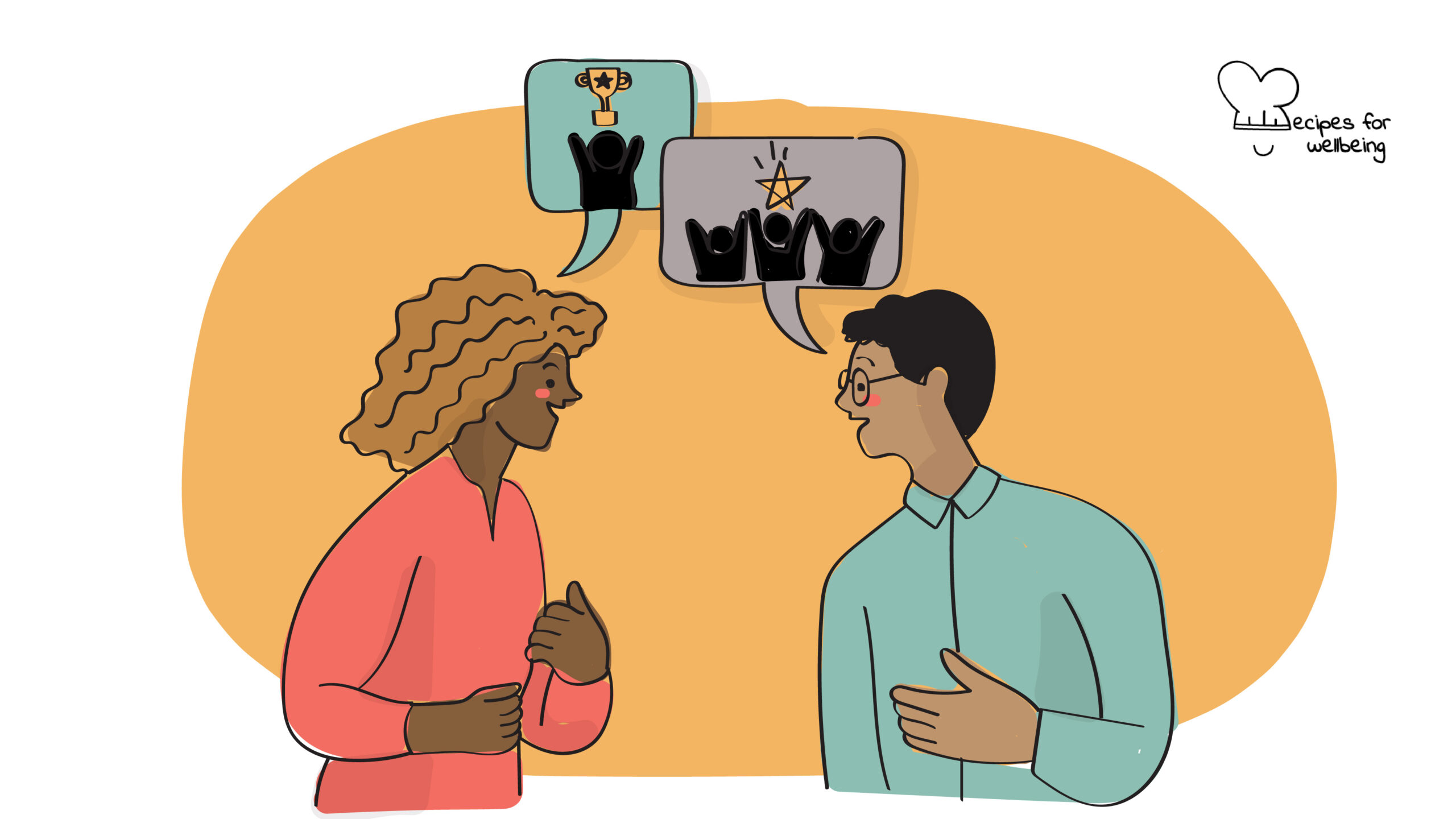
Challenging dominant worldviews
When we grasp fully that the best expressions of our humanity were not invented by civilization but by cultures that preceded it, that the natural world is not only a set of constraints but of contexts within which we can more fully realize our dreams, we will be on the way to a long overdue reconciliation between opposites which are of our own making. ―Paul Shepard
👥 Serves: 1 person, 11-25 people, 2-10 people, 26-40 people, 41+ people
🎚 Difficulty: Hard
⏳ Total time: Ongoing
🥣 Ingredients: “Restoring the Kinship Worldview” book by Wahinkpe Topa (Four Arrows) and Darcia Narvaez (if you’re curious to find out more about it!)
🤓 Wholebeing Domains: Awareness, Bioempathy, Community, Liberatory Learning
💪 Wholebeing Skills: Allyship, Belonging, Challenging, Ecosystem harmony, Liberation, Nature kinship, Perspective, Reciprocity, Self-awareness

Challenging dominant worldviews
📝 Description
Exploring a kincentric and earth-based consciousness.
In the book Restoring the Kinship Worldview, authors Wahinkpe Topa (Four Arrows) and Darcia Narvaez introduce readers to the Indigenous worldview (in their words, a worldview is “an implicit set of assumptions that guide behavior”) which considers Nature as intelligent and living. This worldview is kincentric and represents “the first step toward returning to an earth-based consciousness”. The following recipe introduces 40 common Indigenous worldview manifestations, challenging common dominant worldview manifestations.
👣 Steps
Step 1 – A note on cultural appropriation (5’)
Four Arrows and Darcia Narvaez explain that “[a]ll people are indigenous to Earth and have the right and the responsibility to practice and teach the Indigenous worldview precepts”. For Non-Indians concerned about misappropriation, we invite you to read the following peer-reviewed article: The Indigenization Controversy: For Whom By Whom.
Step 2 – Explore dominant and Indigenous worldview manifestations
Take your time to read through 40 common dominant and Indigenous worldview manifestations and reflect on them. If you wish to go deeper, we encourage you to read the book Restoring the Kinship Worldview by Wahinkpe Topa (Four Arrows) and Darcia Narvaez.
| Common Dominant Worldview Manifestations | Common Indigenous Worldview Manifestations |
| 1. Rigid hierarchy | 1. Nonhierarchical |
| 2. Fear-based thoughts and behaviours | 2. Courage and fearless trust in the universe |
| 3. Living without strong social purpose | 3. Socially purposeful life |
| 4. Focus on self and personal gain | 4. Emphasis on community welfare |
| 5. Rigid and discriminatory gender stereotypes | 5. Respect for various gender roles and fluidity |
| 6. Materialistic | 6. Nonmaterialistic |
| 7. Earth as an unloving “it” | 7. Earth and all systems as living and loving |
| 8. More head than heart | 8. Emphasis on heart over head |
| 9. Competition to feel superior | 9. Competition to develop positive potential |
| 10. Minimal empathy, humility, and gratitude | 10. Strong emphasis on empathy, humility, and gratitude |
| 11. Anthropocentric | 11. Animistic and biocentric |
| 12. Words used to deceive self or others | 12. Words as sacred, truthfulness as essential |
| 13. Truth claims as absolute | 13. Truth seen as multifaceted, accepting the mysterious |
| 14. Rigid boundaries and fragmented systems | 14. Flexible boundaries and interconnected systems |
| 15. Unfamiliarity with alternative consciousness | 15. Regular use of alternative consciousness |
| 16. Disbelief in spiritual energies | 16. Recognition of spiritual energies |
| 17. Disregard for holistic interconnectedness | 17. Emphasis on holistic interconnectedness |
| 18. Minimal contact with others | 18. High interpersonal engagement, touching |
| 19. Emphasis on theory and rhetoric | 19. Inseparability of knowledge and action |
| 20. Acceptance of authoritarianism | 20. Resistance to authoritarianism |
| 21. Time as linear | 21. Time as cyclical |
| 22. Dualistic thinking | 22. Seeking complementary duality |
| 23. Acceptance of injustice | 23. Intolerance of injustice |
| 24. Emphasis on rights | 24. Emphasis on responsibility |
| 25. Aggression as highest expression of courage | 25. Generosity as highest expression of courage |
| 26. Ceremony as rote formality | 26. Ceremony as life-sustaining |
| 27. Learning as didactic | 27. Learning as experiential and collaborative |
| 28. Trance as dangerous or stemming from evil | 28. Trance-based learning as helpful and natural |
| 29. Human nature as corrupt or evil | 29. Human nature as good but malleable |
| 30. Humor used infrequently for coping | 30. Humor as essential tool for coping |
| 31. Conflict resolution with revenge, punishment | 31. Conflict resolution as return to community |
| 32. Learning is fragmented and theoretical | 32. Learning is holistic and place based |
| 33. Minimal emphasis on personal vitality | 33. Personal vitality is essential |
| 34. Social laws of society are primary | 34. Laws of Nature are primary |
| 35. Self-knowledge not highest priority | 35. Holistic self-knowledge is most important |
| 36. Autonomy sought on behalf of self | 36. Autonomy sought to better serve others |
| 37. Nature as dangerous or utilitarian only | 37. Nature as benevolent and relational |
| 38. Other-than-human beings are not sentient | 38. All life-forms are sentient |
| 39. Low respect for women | 39. High respect for women |
| 40. Ignorance of importance of diversity | 40. Aware of vital importance of diversity |

